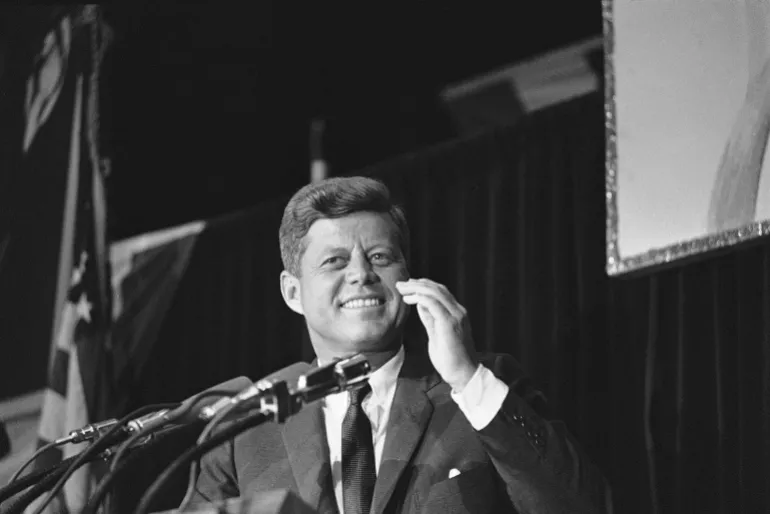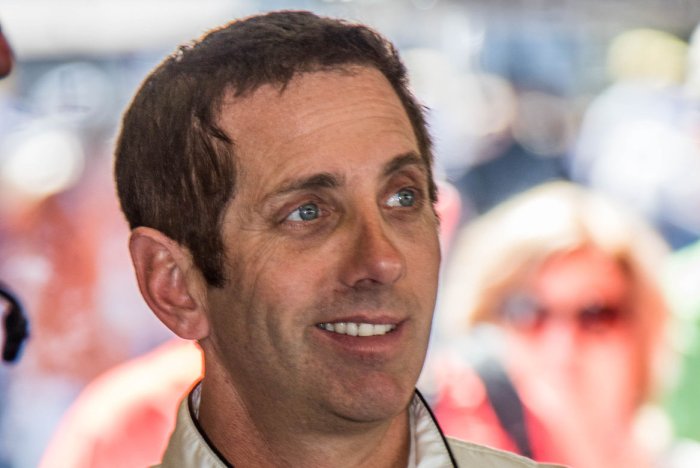WASHINGTON — President Trump on Sunday hosted the Kennedy Center Honors and praised Sylvester Stallone, Kiss, Gloria Gaynor, Michael Crawford and George Strait, the slate of honorees he helped choose, as being “legendary in so many ways.”
“Billions and billions of people have watched them over the years,” Trump, the first president to command the stage, said to open the show.
The Republican president said the artists, recognized with tribute performances during the show, are “among the greatest artists and actors, performers, musicians, singers, songwriters ever to walk the face of the Earth.”
Since returning to office in January, Trump has made the John F. Kennedy Center for the Performing Arts, which is named after a Democratic predecessor, a touchstone in a broader attack against what he has lambasted as “woke” anti-American culture.
Trump said Saturday that he was hosting “at the request of a certain television network.” He predicted the broadcast scheduled for Dec. 23 on CBS and Paramount+ would have its best ratings ever.
Before Trump, presidents watched the show alongside the honorees. Trump skipped the honors altogether during his first term.
Asked how he got ready for the gig, Trump said as he moved along the red carpet with his wife, first lady Melania Trump, that he “didn’t really prepare very much.”
“I have a good memory, so I can remember things, which is very fortunate,” the president said. “But just, I wanted to just be myself. You have to be yourself.”
Commerce Secretary Howard Lutnick, one of several Cabinet secretaries attending the ceremony, said his boss “is so relaxed in front of these cameras, as you know, and so funny, I can’t wait for tonight.” Lutnick arrived with his wife, a member of the Kennedy Center’s board.
Trump appeared on stage three times to open and close the show, and after intermission. He also talked up each artist in prerecorded videos that played before their tributes.
Trump was both gracious and critical in the comments he delivered from the stage, lavishing the honorees with effusive praise but at times showing a mean streak. After returning from intermission, he said he’d toured some of the construction projects he has launched to renovate the performing arts center. And he said it was a “fantastic” night.
“Well, we’re really having a good time tonight,” Trump said. “So many people I know in this audience. Some good. Some bad. Some I truly love and respect. Some I just hate.”
Since 1978, the honors have recognized stars for their influence on American culture and the arts. Members of this year’s class are pop-culture standouts, including Stallone for his “Rocky” and “Rambo” movies, Gaynor for her “I Will Survive” feminist anthem and Kiss for its flashy, cartoonish makeup and onstage displays of smoke and pyrotechnics.
Strait is a leader in the world of country music and Crawford, a Tony Award-winning actor, is best known for starring in “Phantom of the Opera,” the longest-running show in Broadway history.
Trump said persistence is a trait shared by the honorees, several of whom had humble beginnings.
“Some of them have had legendary setbacks, setbacks that you have to read in the papers because of their level of fame,” he said from the stage. “But in the words of Rocky Balboa, they showed us that you keep moving forward, just keep moving forward.”
He said many of the politicians, celebrities and others in the audience shared the trait, too.
“I know so many of you are persistent,” Trump said in his opening. “Many of you are miserable, horrible people. You are persistent. You never give up. Sometimes I wish you’d give up, but you don’t.”
The ceremony was expected to be emotional for the members of Kiss. The band’s original lead guitarist, Ace Frehley, died in October after he was injured during a fall. During the tribute to Kiss, a lone red guitar that emitted smoke was placed on stage in remembrance of Frehley, who was known for having a smoke bomb in his instrument.
The program closed with a rousing performance by Cheap Trick of Kiss’ “Rock and Roll All Nite” that brought the audience to its feet.
Stallone said receiving the honor was like being in the “eye of a hurricane.”
“This is an amazing event,” he said on the red carpet. “But you’re caught up in the middle of it. It’s hard to take it in until the next day. … but I’m incredibly humbled by it.”
Crawford also said it was “humbling, especially at the end of a career.”
Gaynor said it “feels like a dream” to be honored. “To be recognized in this way is the pinnacle,” she said after arriving.
Mike Farris, an award-winning gospel singer who performed for Gaynor, called her a dear friend. “She truly did survive,” Farris said. “What an iconic song.”
Trump has taken over the Kennedy Center
Trump upended decades of bipartisan support for the center by ousting its leadership and stacking the board of trustees with Republican supporters, who elected him chair. He has criticized the center’s programming and the building’s appearance — and has said, perhaps jokingly, that he would rename it as the “Trump Kennedy Center.” He secured more than $250 million from Congress for renovations of the building.
Asked Sunday night about a possible renaming, Trump said it would be up to the board. Still, he joked at one point about the “Trump Kennedy Center.”
Presidents of each political party have at times found themselves face to face with artists of opposing political views. Republican Ronald Reagan was there for honoree Arthur Miller, a playwright who championed liberal causes. Democrat Bill Clinton, who had signed an assault weapons ban into law, marked the honors for Charlton Heston, an actor and gun rights advocate.
During Trump’s first term, multiple honorees were openly critical of the president. In 2017, Trump’s first year in office, honors recipient and film producer Norman Lear threatened to boycott his own ceremony if Trump attended. Trump stayed away during that entire term.
Trump has said he was deeply involved in choosing the 2025 honorees and turned down some recommendations because they were “too woke.” He said Sunday that about 50 names were whittled down to five. While Stallone is one of Trump’s Hollywood ”special ambassadors” and has likened Trump to George Washington, the political views of Sunday’s other guests are less clear.
Honorees’ views about Trump
Strait and Gaynor have said little about their politics, although Federal Election Commission records show that Gaynor has given money to Republican organizations in recent years.
Simmons spoke favorably of Trump when Trump ran for president in 2016. But in 2022, Simmons told Spin magazine that Trump was “out for himself” and criticized Trump for encouraging conspiracy theories and public expressions of racism.
Fellow Kiss member Paul Stanley denounced Trump’s effort to overturn his 2020 election defeat to Democrat Joe Biden, and said Trump supporters who stormed the Capitol on Jan. 6, 2021, were “terrorists.” But after Trump won in 2024, Stanley urged unity.
“If your candidate lost, it’s time to learn from it, accept it and try to understand why,” Stanley wrote on X. “If your candidate won, it’s time to understand that those who don’t share your views also believe they are right and love this country as much as you do.”
Superville and Italie write for the Associated Press. Italie reported from New York.




